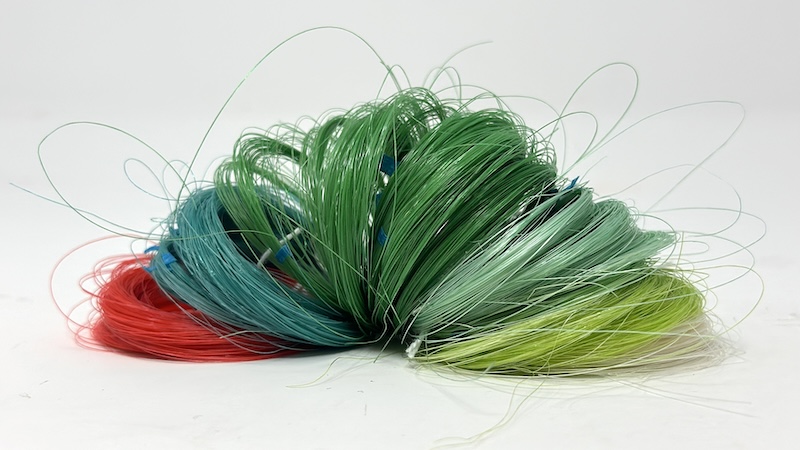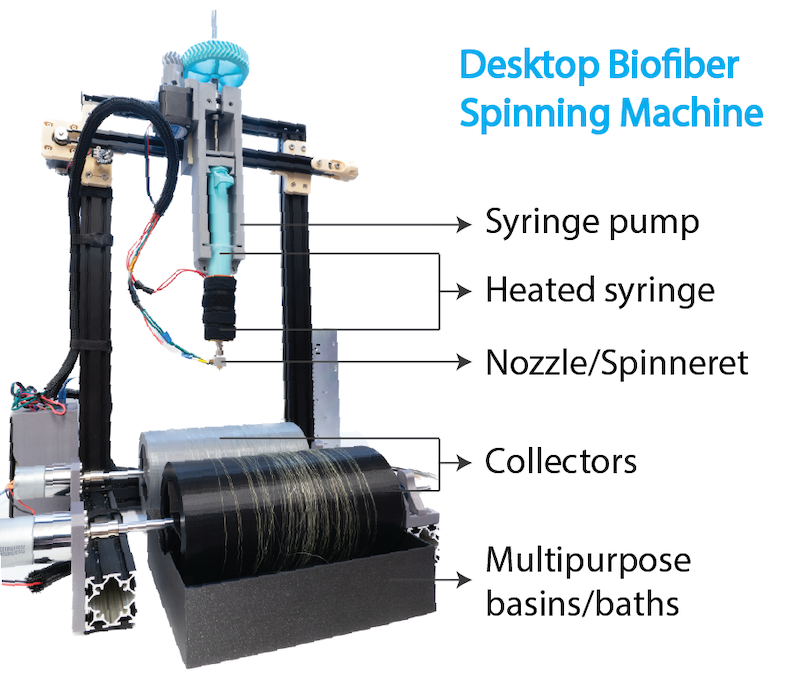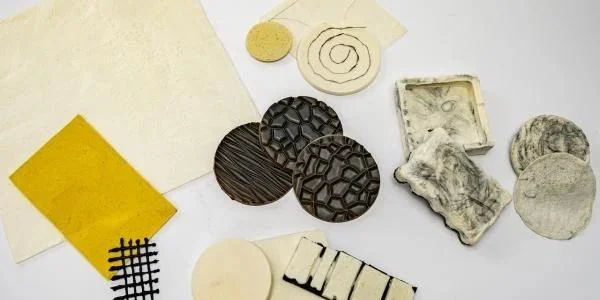
Smart textiles combine electronics with traditional textile forms, showing great promise in creating soft and flexible interactive systems for human-computer interaction and robotics. However, they also present significant sustainability challenges as they merge two substantial waste streams: textiles and electronics.
We wrote a paper in the hopes of contributing to sustainability efforts by focusing on the integration of biobased materials that are biodegradable, compostable, and recyclable in the design of smart textiles. We introduced a Desktop Biofibers Spinning Machine to enable smart textile innovators to explore biobased fibers (i.e., biofibers) and envision applications in sustainable smart textiles.

The paper cited below describes the machine’s design, a usage walkthrough, considerations for fiber spinning, and an exploration of various formulations to make gelatin biofibers. We provide several examples of biofibers integrated into smart textile applications. Finally, we discuss lessons learned from working with biofibers and the unique opportunities our machine brings to the fiber design space in Human Computer Interaction and beyond.
Team: Eldy Lazaro, Michael Rivera, Mirela Alistar, Laura Devendorf, Miles Lewis, Lily Gabriel. A collaboration between the Unstable Design Lab, Living Matter Lab, and Utility Research Lab.
Citation: Eldy S. Lazaro Vasquez, Mirela Alistar, Laura Devendorf, and Michael L. Rivera. 2024. Desktop Biofibers Spinning: An Open-Source Machine for Exploring Biobased Fibers and Their Application Towards Sustainable Smart Textile Design. In Proceedings of the 2024 CHI Conference on Human Factors in Computing Systems (CHI ’24). Association for Computing Machinery, New York, NY, USA, Article 856, 1–18. https://doi.org/10.1145/3613904.3642387
Video: https://www.youtube.com/watch?v=MfL6a9ZOTR4
Instructions to Make your Own: https://github.com/utilityresearchlab/desktop-biofibers-spinning
